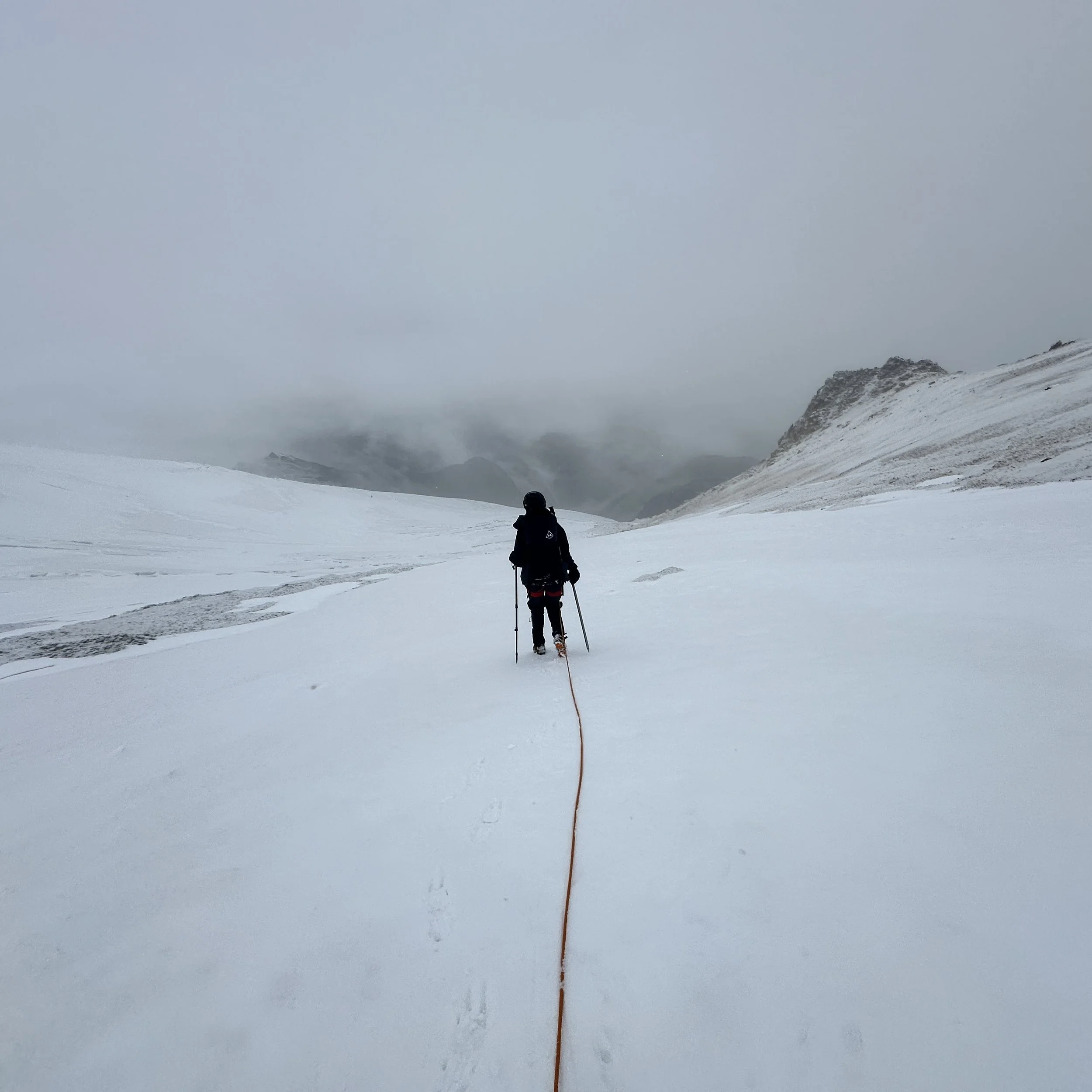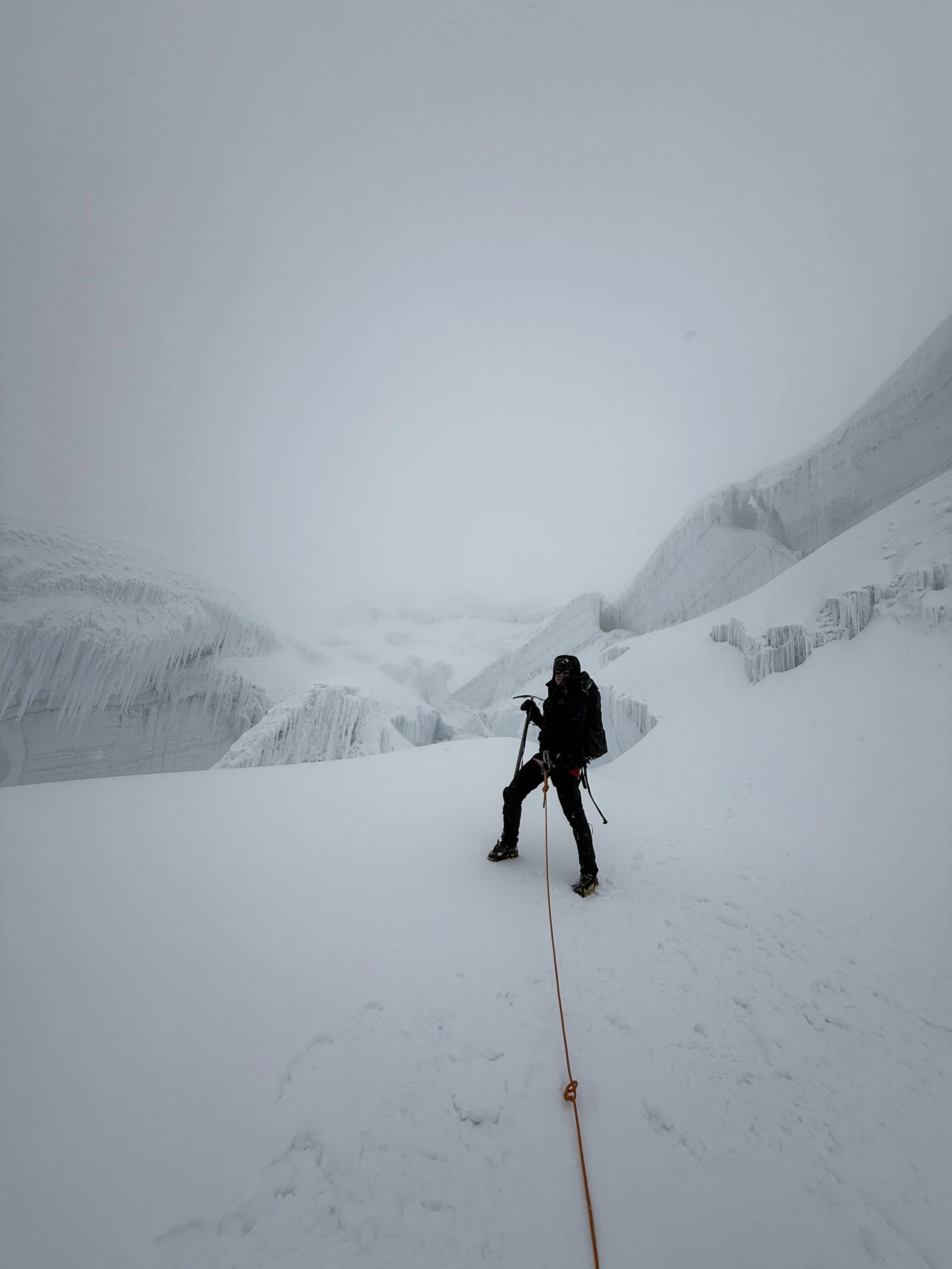cayambe
Beyond the Step Count: almost 10,000 steps, but with 20 kg, in -20°C
Mountain: Volcan Cayambe
Altitude: 18,996 ft | 5,790 m
Location: Pichincha , Ecuador, 0°1′30''N 77°59′20″W9,456 steps. That's what my Garmin watch displayed after 6.5 hours of grueling work climbing the frozen volcano Cayambe. We had set out for the summit at midnight sharp, spending the entire night clawing our way up the icy slopes of the volcano, either ascending or descending. The temperatures hovered at a bone-chilling -20°C, giving me my first, small, but nevertheless concerning frostbite on the toe. As I sat down exhausted in the refuge camp for breakfast, I felt a twinge of disappointment – my arduous work and sleepless night hadn't even qualified me for the infamous baseline of 10,000 steps.
The 10,000 steps concept gained popularity in the mid-2010s, coinciding with the rise of affordable portable pedometers that became popular Christmas gifts. I remember complimenting my classic Longines watch with a Jawbone, a fitness band now long discontinued, considering it a future-forward fashion statement. The origin of this benchmark traces back to the Yamasa Clock Company, which invented the concept while promoting its digital pedometer in the 1990s. They called the product "manpo-kei" – which translates to "10,000 steps meter" in Japanese ("man" = 10,000, "po" = steps, "kei" = meter/gauge), linking the numeric value of steps to a perceived healthy lifestyle. Though research has since demonstrated multiple times that reaching 10,000 steps doesn't guarantee a healthy lifestyle, this metric has become deeply embedded in our culture, creating a mental benchmark for minimal healthy movement.
However, my experience on Cayambe made me ponder the arbitrariness and meaning of numbers. Are all steps created equal? My Garmin, oblivious to the challenges I faced, made no distinction between a leisurely summer run in Central Park and a heart-pounding crevasse crossing. Some steps required me to kick my crampons into the frozen slope two or three times before finding a stable hold. Most were taken with a heavily laden backpack digging into my shoulders. After the fifth hour, every step became more distinct through burning muscles. And yet, staring at that "paltry" number on my watch, frustration coursed through me. Was this all I had to show for a sleepless night battling a mountain?
As quantifying and digitizing our health continues to be a dominant approach to wellness, we will probably refine the numbers and redefine our measures of movement, acknowledging the nuances of exertion and specific performance conditions. But for now, physical accomplishments like climbing a mountain give us a profound sense of achievement that no pedometer can ever truly capture.




